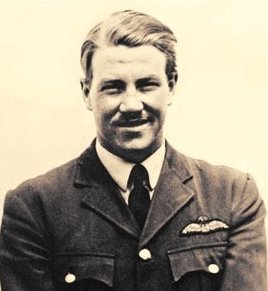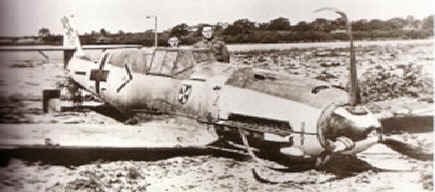|
|
Pat Hughes, was born in Cooma on 19th September 1917, he had submitted to both the Air Force and the Navy. After being selected for both services he chose the Air Force and began his training as a Cadet Pilot at RAAF Point Cook in Victoria. After graduation, he was selected with a number of others to transfer to the RAF under a special Short Service Commission Scheme. They sailed for England on 9 January 1937. After two years training as a fighter pilot he was a member of 64 Squadron, RAF at Church Fenton when hostilities began in 1939. Pat was promoted to Acting Flight Lieutenant in November 1939 as a Flight Commander to the newly formed 234 Squadron at RAF Leconfield in East Yorkshire. Initially, they were equipped with Fairey Battles, Bristol Blenheims and Gloster Gauntlets, but in March 1940 they were re-equipped with Spitfires. In June 1940, 234 squadron was transferred to Cornwall. The Battle of Britain began in July 1940, and Pat was credited with the first confirmed kill for the squadron with the shooting down of a Ju 88 near Lands End. One of the duties of 234 Squadron was to provide air cover for 10 Squadron (RAAF) based at Mount Batten. In August, 234 Squadron was transferred to Middle Wallop in Hampshire. During the next two months with the Battle of Britain at its height, Pat was the driving force behind the achievements of 234 Squadron. His close-in and aggressive tactics were responsible for many of 234's successes. |

